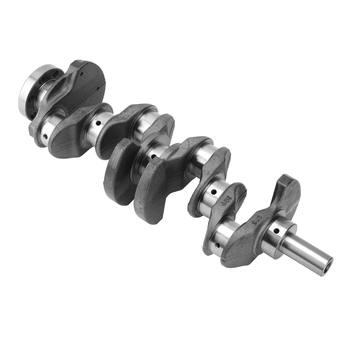The Unsung Hero of Engine Performance
When it comes to high-performance engines, most people think about horsepower, torque, and RPMs. But there's a smaller, lesser-known detail that plays a crucial role in engine performance: the crankshaft fillet radius. This seemingly minor aspect of engine design can significantly impact an engine's reliability, longevity, and overall power output. Let's dive into why the crankshaft fillet radius is so essential and how it can benefit your engine.
What is the Crankshaft Fillet Radius?
To understand the importance of the crankshaft fillet radius, we first need to define it. The fillet radius is the curve that connects the journal (the bearing surface) and the web (the section between the journals) of the crankshaft. In simpler terms, it's the rounded corner that joins these two parts. The larger the fillet radius, the smoother the transition between the journal and the web.
The Benefits of a Larger Fillet Radius
So, why does the size of the fillet radius matter? As it turns out, a larger fillet radius can have several benefits for your engine's performance and durability:
Reduced Stress Concentration
One of the primary advantages of a larger fillet radius is that it helps to reduce stress concentration in the crankshaft. Stress concentration occurs when there is a sudden change in geometry, such as a sharp corner. By increasing the fillet radius, you create a smoother transition that distributes stress more evenly, reducing the likelihood of failure due to fatigue or cracking.
Improved Oil Flow
Another benefit of a larger fillet radius is improved oil flow around the crankshaft. The smoother surface allows oil to move more freely, reducing friction and heat buildup. This can lead to better lubrication, cooler engine temperatures, and increased engine life.
Enhanced Engine Balance
A larger fillet radius can also contribute to better engine balance. By reducing stress concentration and improving oil flow, the crankshaft operates more smoothly, which can translate to less vibration and a smoother-running engine. This can lead to improved performance, better fuel efficiency, and increased component longevity.
Practical Applications and Considerations
Now that we understand the benefits of a larger fillet radius let's explore some practical applications and considerations for optimizing this critical detail in your engine:
In Conclusion: Don't Overlook the Fillet Radius
In the world of high-performance engines, the crankshaft fillet radius is a small detail that can make a big difference. By understanding the benefits of a larger fillet radius and taking steps to optimize this aspect of your engine, you can enjoy improved performance, reliability, and longevity. So the next time you're thinking about engine upgrades, don't forget about the humble fillet radius – it might just be the secret to unlocking your engine's full potential.
Have you ever considered the impact of the crankshaft fillet radius on your engine's performance? What steps have you taken to optimize this critical detail? Share your experiences and insights in the comments below.




